Special Report
20 Companies Profiting the Most From War

Published:
Last Updated:

Global arms sales totaled $420 billion in 2018, up 4.6% from 2017, according to the Stockholm International Peace Research Institute (SIPRI). U.S.-based companies again dominate SIPRI’s list of top global arms manufacturers and military services providers. With Congress passing its record high $738 billion defense spending bill this December, which includes military modernization and a new Space Force military branch, this trend is likely to continue.
24/7 Wall St. reviewed data provided by SIPRI to identify the companies profiting most from war. Companies were ranked based on SIPRI’s estimates of arms and military services sales in 2018. Chinese companies were not considered due to lack of sufficient data. Arms and military services sales figures came from SIPRI. Profits for the latest fiscal year came from financial reports and corporate press releases.
The United States is home to half of the world’s 10 largest defense contractors and to 43 of the top 100 defense companies. These companies accounted for 59% of total arms sales by the world’s 100 largest defense contractors in 2018 — an increase of 7.2%
“US companies are preparing for the new arms modernization programme that was announced in 2017 by President Trump,” Aude Fleurant, Director of SIPRI’s Arms and Military Expenditure Programme said in SIPRI’s December press release.
“Large US companies are merging to be able to produce the new generation of weapon systems and therefore be in a better position to win contracts from the US Government.”
President Donald Trump proposed in 2017 a defense budget of $716 billion, and modernization would include the establishment of a sixth armed service for space. Congress approved this December a defense budget of $738 billion.
Northrop Grumman Corp. and General Dynamics — two of the top five arms and military services companies — each completed multi-billion dollar acquisitions in 2018, for example.
Click here to see the 20 companies profiting the most from war

20. Rolls-Royce
> Profits for most recent fiscal year: -$1.52 billion
> Arms and military services sales in 2018: $4.68 billion
> Arms sales as pct. of total sales in 2018: 22.0%
> 1-year change in arms sales: -0.7%
Rolls-Royce Holdings is separate from Rolls-Royce Motor Cars, the luxury automobile manufacturer that was sold to German group BMW in 1998. While Rolls-Royce Holdings sold $4.7 billion worth of military products and services in 2018, arms sales accounted for a relatively small share of the company’s total revenue. Today, the largest shares of Rolls-Royce Holdings’ revenue comes from civil aerospace (48%), followed by power systems (22%), and defense (20%).
In 2018, it won a contract to maintain, repair and overhaul engines for the US Air Force Global Hawk and US Navy Triton fleets, which is worth about $420 million over six years. In November 2019, the company announced it had won a five-year $1.2 billion contract to maintain equipment on U.S. Marine Corps, Navy, and Air Force aircraft.
[in-text-ad]
19. Booz Allen Hamilton
> Profits for most recent fiscal year: $418.6 million
> Arms and military services sales in 2018: $4.68 billion
> Arms sales as pct. of total sales in 2018: 70.0%
> 1-year change in arms sales: 5.8%
Moving up the list from the world’s 20th largest arms and military services provider to 19th, Booz Allen Hamilton reported total sales of $6.70 billion in 2018. The U.S.-based company relied on arms sales for 70% of that revenue, according to SIPRI estimates.
Like many defense contractors, Booz Allen Hamilton has reacted to U.S. plans to modernize its military — President Donald Trump proposed in 2017 a defense budget of $716 billion, a significant increase from previous years — by making investments in the space sector. Speaking to SpaceNews in July, Booz Allen Hamilton Senior VP Chris Bogdan said, “We don’t build satellites, rockets or rovers. We are investing in open architectures, artificial intelligence, machine learning, data visualization.” Congress approved this December a defense budget of $738 billion.
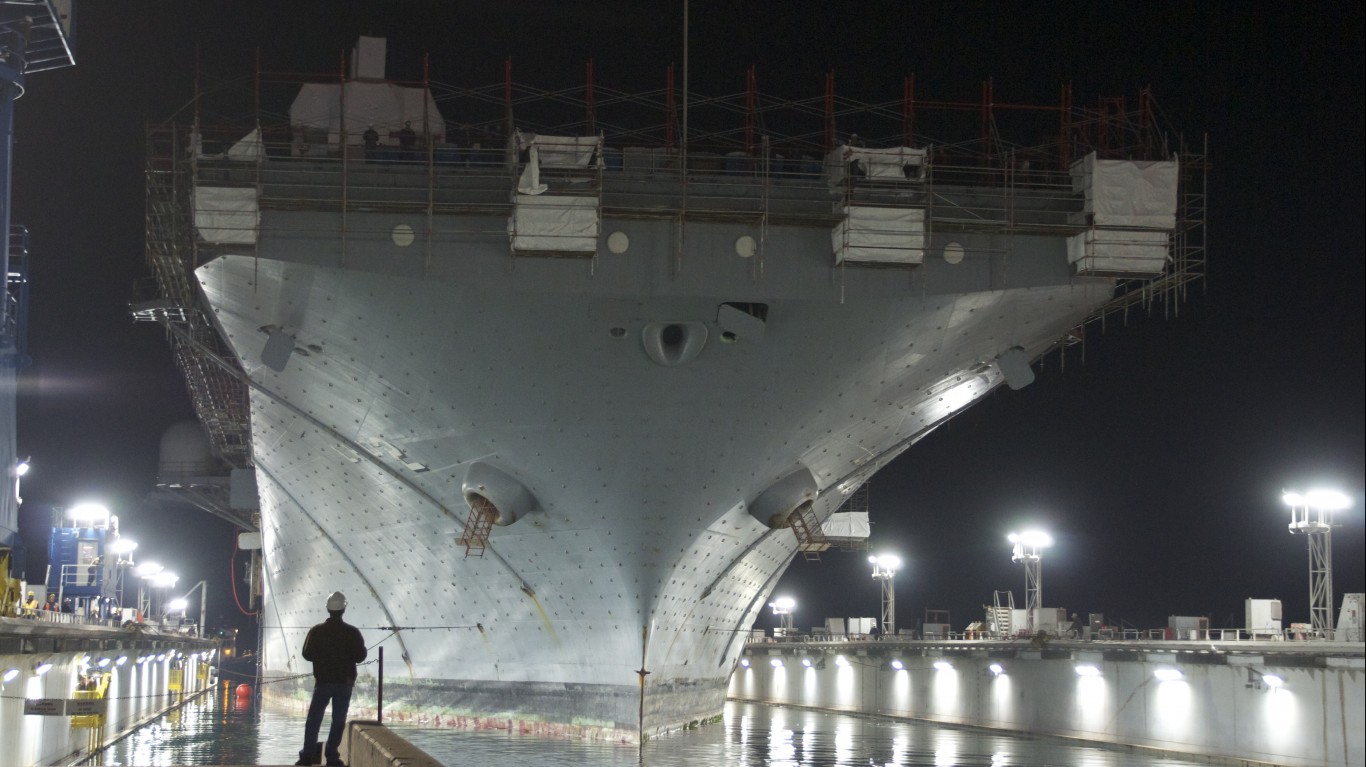
18. United Shipbuilding Corp.
> Profits for most recent fiscal year: $101 million
> Arms and military services sales in 2018: $4.7 billion
> Arms sales as pct. of total sales in 2018: 84.0%
> 1-year change in arms sales: -1.30%
United Shipbuilding Corporation, the largest shipbuilding company in Russia, was established in March 2007. The state-owned defense contractor sold $4.7 billion worth of arms in 2018. Arms sales accounted for 84% of USC’s total revenue for the year.
In July 2014, U.S. Department of the Treasury added USC to a list of companies banned from doing business in the United States. The sanctions were imposed in response to Russia’s continued support for separatists in eastern Ukraine.
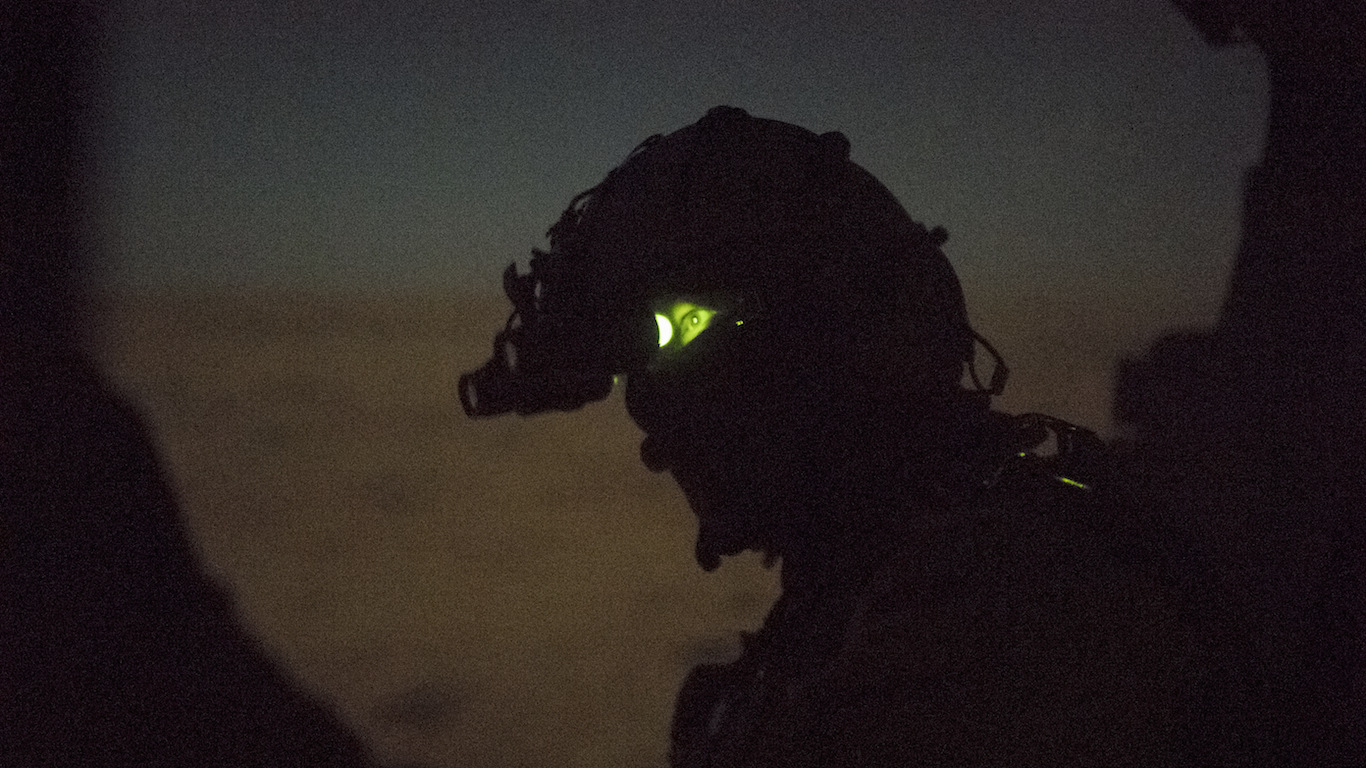
17. Harris Corp.
> Profits for most recent fiscal year: N/A
> Arms and military services sales in 2018: $4.97 billion
> Arms sales as pct. of total sales in 2018: 73.0%
> 1-year change in arms sales: 9.10%
Harris Corporation and L-3 Technologies, which is also on this list, announced this June regulatory approval for their merger. With combined total revenue of approximately $18 billion and arms and military services sales of approximately $15 billion, the merger will likely move the re-named L3 Harris Technologies to fifth or sixth on this list.
As of the end of 2018, Harris Corp had arms and military service sales of $4.97 billion, up 9.10% from $4.56 billion in 2017. Like most defense contractors, which rely heavily on government clients, most (73%) of the company’s overall revenue of $6.80 billion in 2018 came from contracts with the U.S. government.
[in-text-ad-2]

16. Leidos
> Profits for most recent fiscal year: $582 million
> Arms and military services sales in 2018: $5.00 billion
> Arms sales as pct. of total sales in 2018: 49.0%
> 1-year change in arms sales: 11.0%
Virginia-based technology company Leidos reported an annual revenue of $10.2 billion in 2018. About half the revenue came from the company’s defense and intelligence division. The company’s services include IT infrastructure, data analytics, cyber security, logistics, surveillance vehicle and equipment development and maintenance, and consulting. Its defense clients include the U.S. Air Force, Army, Navy, and NATO.
The company’s history with the federal government goes back to its founding in 1969. The U.S. government was the company’s first customer when it hired Leidos to analyze nuclear weapon effects for $70,000. More recently, the company was awarded a contract, with a five-year base period, worth a maximum of $6.5 billion, to operate and sustain the Department of Defense Information and System Networks.
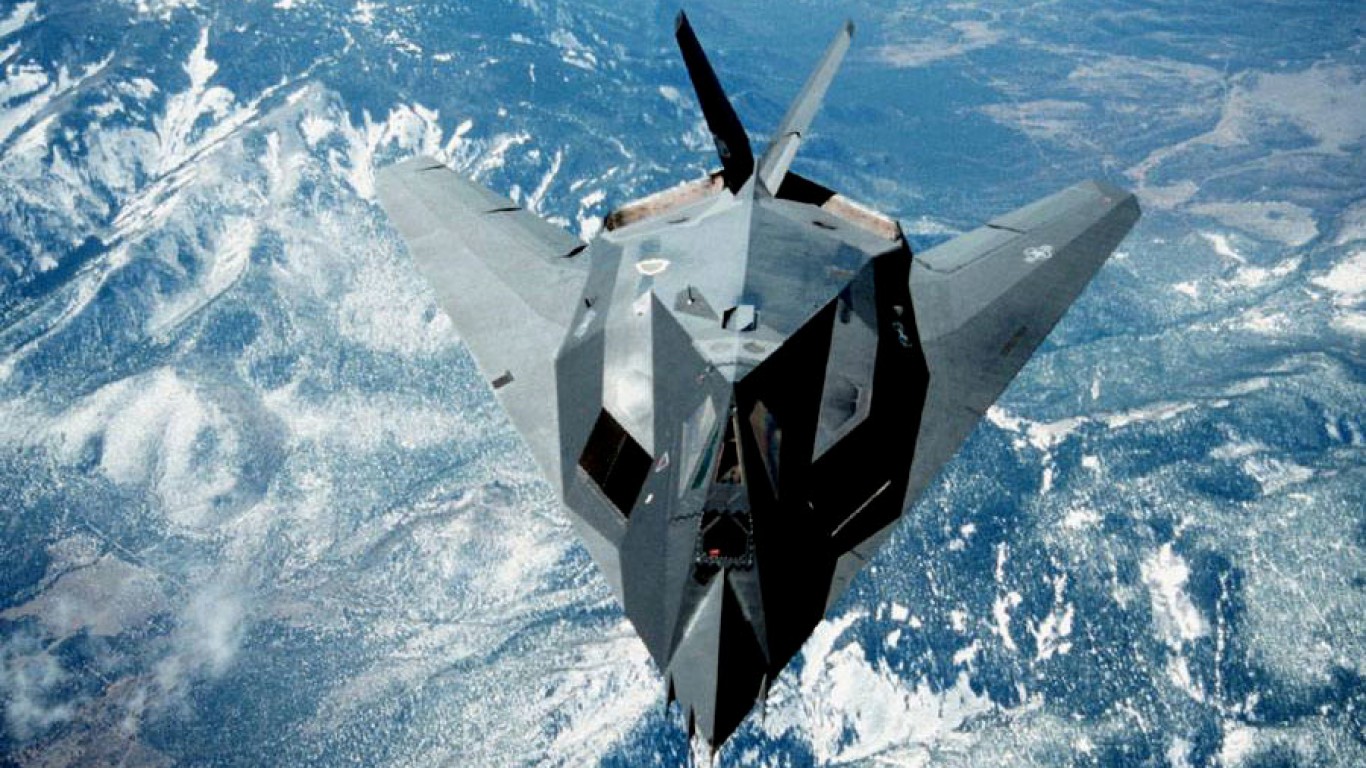
15. United Aircraft Corp.
> Profits for most recent fiscal year: $348.1 million (operating profit)
> Arms and military services sales in 2018: $5.42 billion
> Arms sales as pct. of total sales in 2018: 83.0%
> 1-year change in arms sales: -12.0%
Since the breakup of the Soviet Union in 1991, Russia has been transitioning to a privatized economy. The defense industry, however, remains almost entirely state owned. United Aircraft Corporation was established by decree of Russian President Vladimir Putin in early 2006. The company manufactures civil and special purpose aircraft, but it makes most of its money from arms sales — $5.4 billion in 2018, or 83% of its total revenue that year. UAC’s military aircraft include MiG, Sukhoi, and Yak fighter jets. Though it is based in Russia, UAC has partners in India and Italy.
[in-text-ad]
14. Honeywell International
> Profits for most recent fiscal year: $6.83 billion
> Arms and military services sales in 2018: $5.43 billion
> Arms sales as pct. of total sales in 2018: 13.0%
> 1-year change in arms sales: 19.0%
Honeywell International sells its software and consulting services in a range of industries, including health care, oil and gas, manufacturing, and industrials. For decades, Honeywell has had a contract with the U.S. Army to develop longer range weapons systems, operating systems for unmanned aerial vehicles, and missile navigation systems. The company made $5.4 billion from arms sales in 2018, a 19% increase from 2017. The company has also manufactured over 6,000 T55 engines, which the Army uses in its iconic heavy-lift Chinook helicopter. The company announced in April a partnership with CIAC, a provider of maintenance services to civil and military aircraft operators in Colombia, which will allow Honeywell International to enter new markets.

13. Huntington Ingalls Industries
> Profits for most recent fiscal year: $836.0 million
> Arms and military services sales in 2018: $7.2 billion
> Arms sales as pct. of total sales in 2018: 88.0%
> 1-year change in arms sales: 8.7%
Shipbuilder Huntington Ingalls Industries of Newport News, Virginia, is the sole manufacturer of nuclear-powered aircraft carriers for the United States Navy and is responsible for 70% of the Navy’s current marine fleet. According to SIPRI, HII brought in $7.2 billion in defense revenue in 2018, the eighth most of any U.S. company and 13th most worldwide.
Some of the major contracts awarded to HII in 2019 included one for planning yard design services for nuclear-powered submarines that may be worth more than $454 million. The company is now also one of eight to provide broad analytical and technical services to the U.S. Air Force in network architecture and cybersecurity. This contract may be worth almost $1 billion over the course of five years.
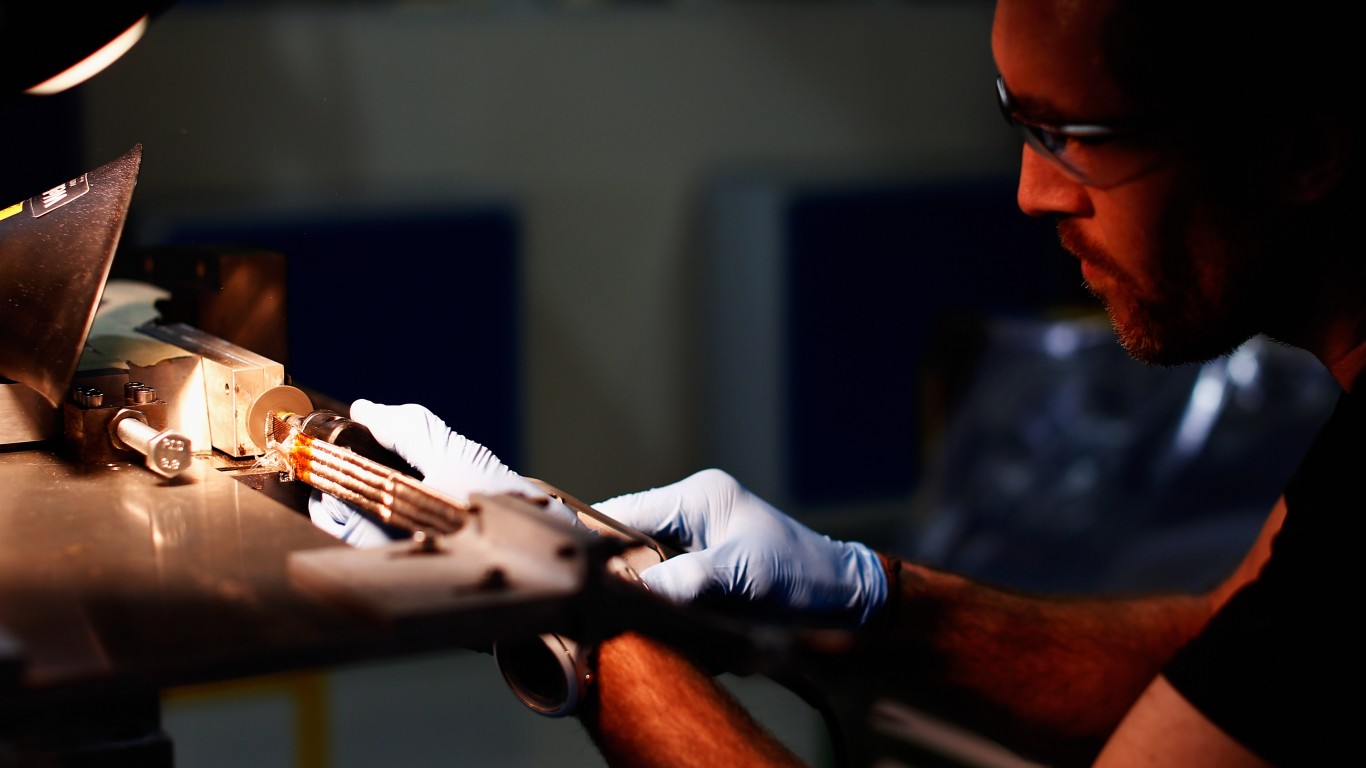
12. L-3 Technologies
> Profits for most recent fiscal year: N/A
> Arms and military services sales in 2018: $8.25 billion
> Arms sales as pct. of total sales in 2018: 81.0%
> 1-year change in arms sales: 4.0%
L-3 Communications changed its name to L-3 Technologies on Dec. 31, 2016. According to SIPRI estimates, the company’s arms sales in 2018 of $8.3 billion were 4% higher than the previous year. The company’s operations include intelligence, surveillance, and reconnaissance products and services in the United States, Canada, Brazil, Europe, South Korea, India, Saudi Arabia, and Australia. The company’s communication technology is integrated with the Predator and Global Hawk drones and is used in U.S. Army communication infrastructure. L-3 also designs power distribution systems and communication technology used by the U.S. Navy’s Virginia-class submarine. L-3 Technologies won in 2018 a contract to build the next increment of the U.S. Navy’s airborne jamming system and to upgrade the electronics architecture on the C-130H tactical airlifter.
L-3 Technologies and Harris Corporation, which is also on this list, announced this June they have received regulatory approval for their merger. With total revenue of approximately $18 billion and arms and military services sales of approximately $15 billion, the merger will likely move the re-named L3 Harris Technologies to fifth or sixth on this list.
[in-text-ad-2]
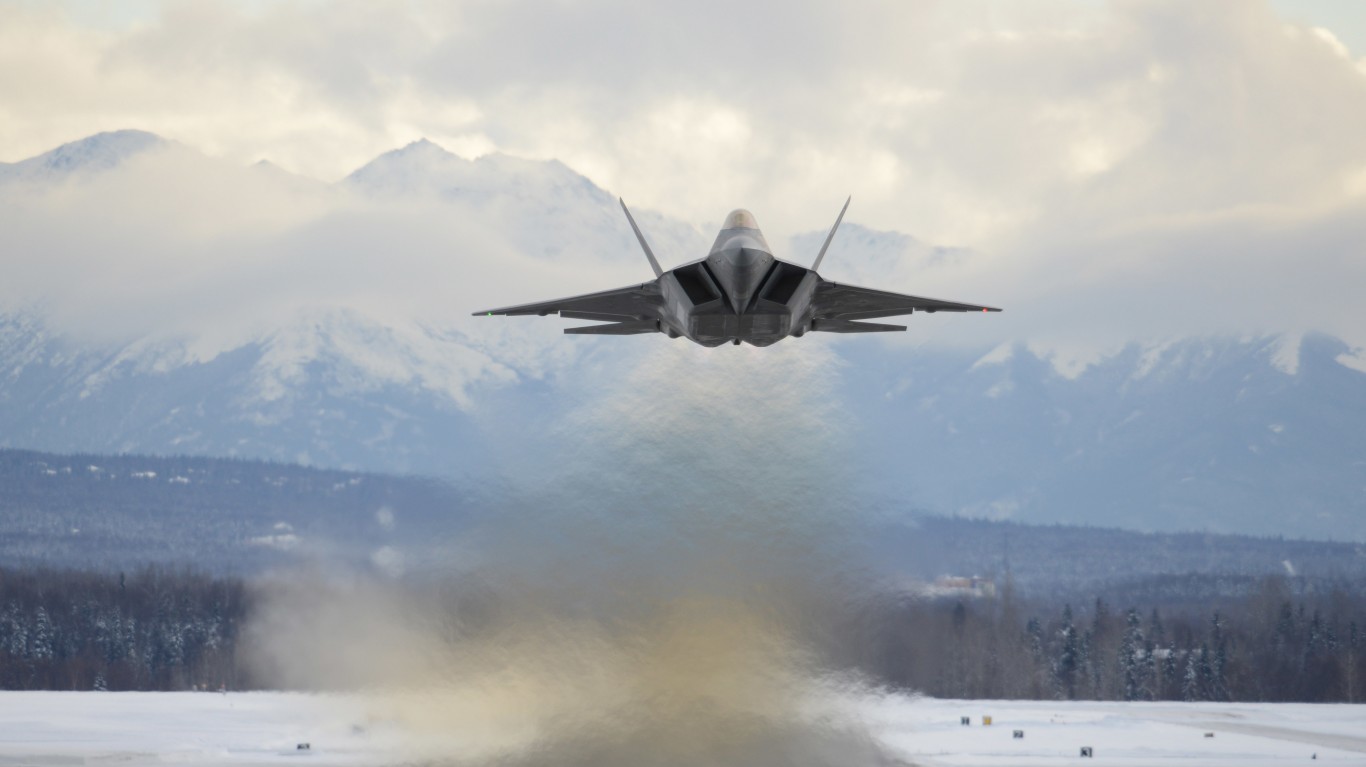
11. United Technologies Corp.
> Profits for most recent fiscal year: $5.65 billion
> Arms and military services sales in 2018: $9.31 billion
> Arms sales as pct. of total sales in 2018: 14.0%
> 1-year change in arms sales: 17.0%
Largely through its subsidiary brands Collins Aerospace and Pratt & Whitney, United Technologies is one of the largest defense contractors in the world. Collins Aerospace designs and sells advanced systems for military helicopters, including rescue hoists, autopilot systems, and laser guided weapon warning systems. Pratt & Whitney designs and manufactures engines currently in use by 34 militaries worldwide. In the U.S. military, the F-22 Raptor, F-16, and F-15 fighter jets, as well as the C-17 Globemaster III, are just a few examples of military aircraft powered by Pratt & Whitney engines.
After its acquisition of aerospace company Rockwell Collins in November 2018, United Technologies split in 2019 into three independent companies: The company’s defense division remains under the United Technologies name, while the Otis Elevator Company and Carrier HVAC company were split into independent entities.
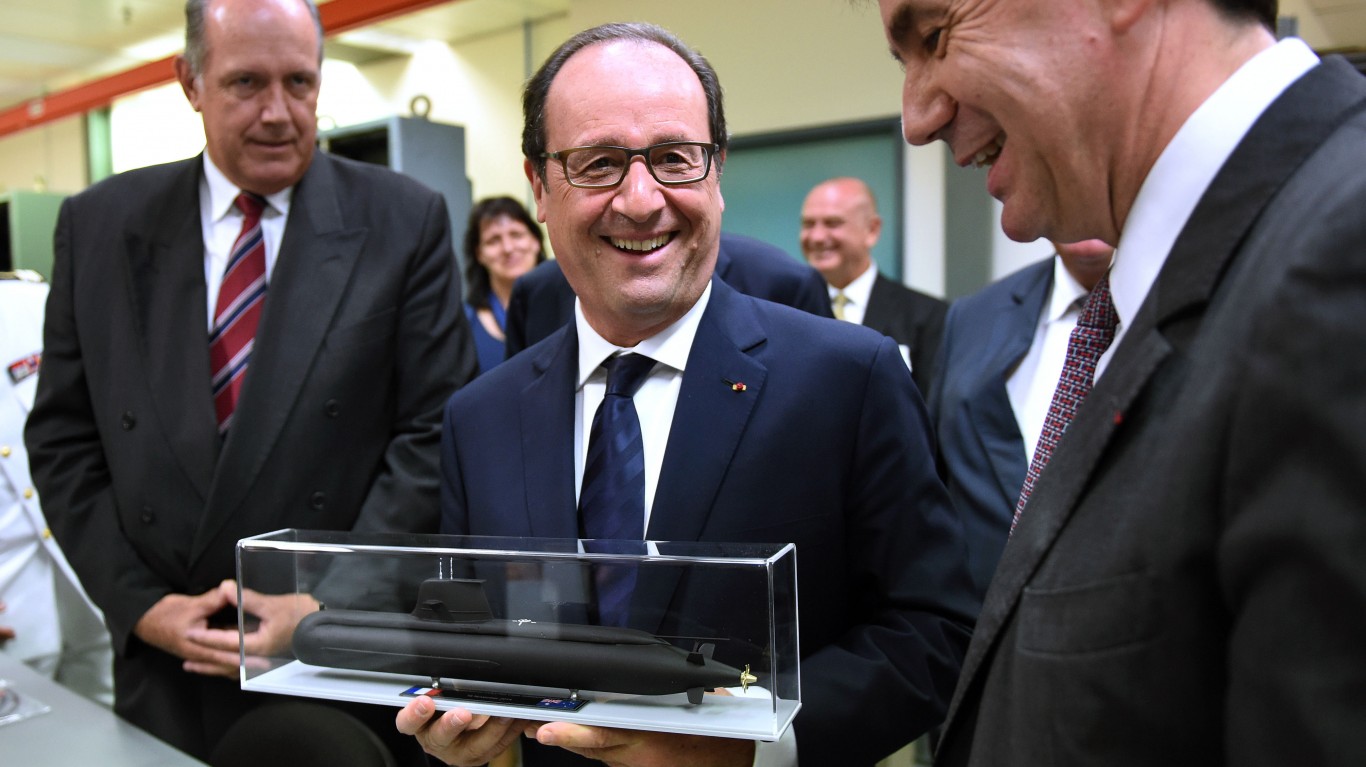
10. Thales
> Profits for most recent fiscal year: $4.2 billion
> Arms and military services sales in 2018: $9.47 billion
> Arms sales as pct. of total sales in 2018: 50.0%
> 1-year change in arms sales: -1.4%
Paris-based Thales, which specializes in aerospace technologies, defense and security, and digital identity and security, is one of the largest defense contractors in Europe. The company’s arms sales accounted for half of its total 2018 revenue, a relatively low proportion compared to most other top military service companies. Also unlike most companies on this list, Thales’ arms sales declined by 1.4% between 2017 and 2018.
In 2018, Thales announced a deal with the French Navy to install seven new radar systems on frigates for missile fire control.
[in-text-ad]
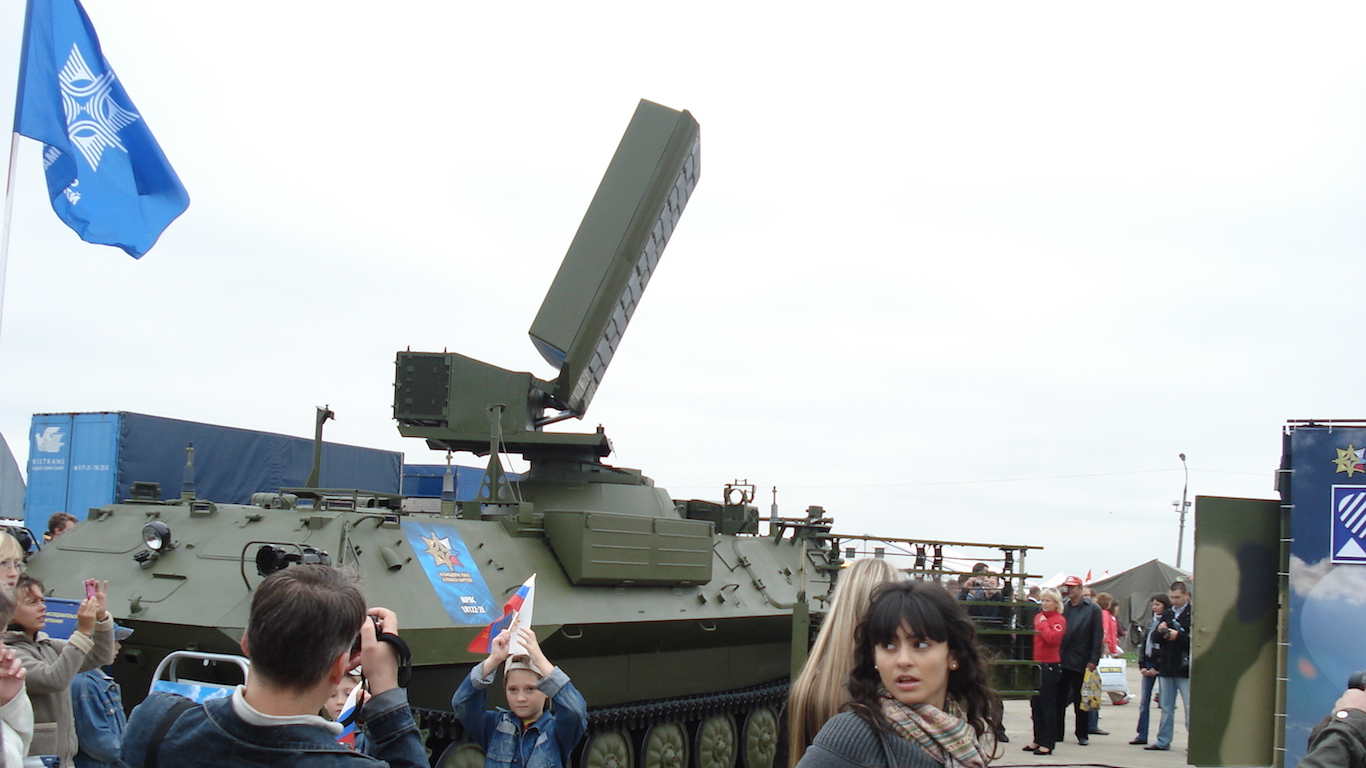
9. Almaz-Antey
> Profits for most recent fiscal year: $1.79 million
> Arms and military services sales in 2018: $9.64 billion
> Arms sales as pct. of total sales in 2018: 98.0%
> 1-year change in arms sales: 18.0%
Established in 2002 under the direction of Russian President Vladimir Putin, Almaz-Antey is the largest known state-owned defense contractor, as measured by revenue, in the world. It is the only Russia-based company in the top 10 of the world’s largest defense contractors. In July 2014, the U.S. Department of the Treasury added Almaz-Antey to a list of companies banned from doing business with the United States. The sanctions were imposed against the company for its involvement in Russia’s continued support of separatists in eastern Ukraine and occupation of Crimea.
Almaz-Antey had arms and military services sales of $9.64 billion in 2018, according to SIPRI estimates. This was an increase from 2017. Still, the share of global arms sales by Russia-based companies fell due to increased expenditure by the United States and Europe.
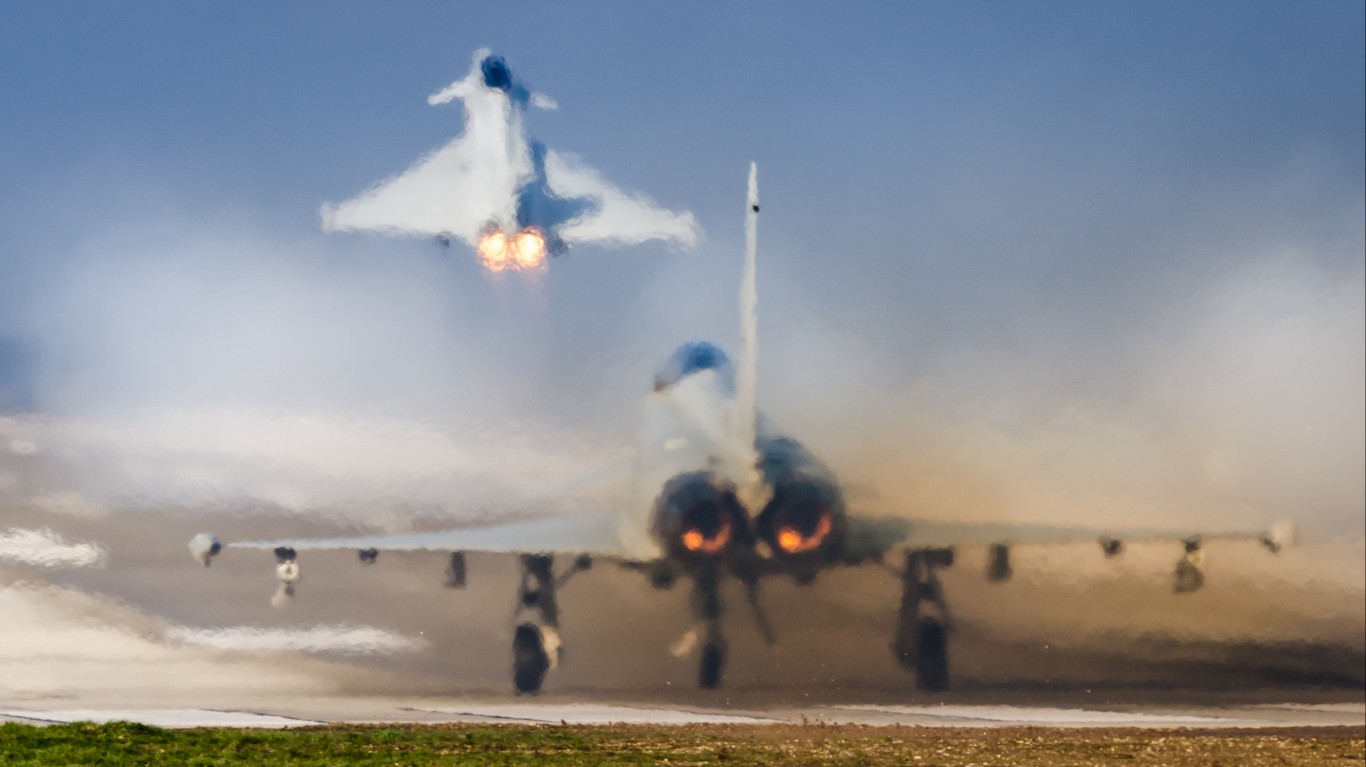
8. Leonardo
> Profits for most recent fiscal year: $664.8 million
> Arms and military services sales in 2018: $9.82 billion
> Arms sales as pct. of total sales in 2018: 68.0%
> 1-year change in arms sales: 4.4%
Named after the Tuscany-born Renaissance man, Leonardo is the only Italian company to rank among the world’s 100 largest defense contractors. The company manufactures products and provides services in multiple branches of defense, including land and naval electronics, information systems, helicopters, jet aircraft, and unmanned aerial vehicles. Leonardo also manufactures weapons systems, torpedoes, and ammunition for naval and land artillery. Leonardo products and services are used in 150 countries. After Italy, the company’s largest customers are the U.K., United States, and Poland.
7. Airbus Group
> Profits for most recent fiscal year: $3.9 billion
> Arms and military services sales in 2018: $11.65 billion
> Arms sales as pct. of total sales in 2018: 15.0%
> 1-year change in arms sales: 9.0%
Though the company’s primary business is in commercial and private aircraft, Airbus is the second largest defense contractor in Europe after UK based BAE Systems. Airbus has had orders for over 600 of its Eurofighter Typhoon jet from a number of countries, including Austria, Saudi Arabia, Kuwait, Qatar, and Oman. The company has also received hundreds of orders for its A400M and C295 transport aircraft. Airbus makes secure communication devices for a client list that includes NATO.
Like many other companies on this list, Airbus is involved in cybersecurity and has worked with defense departments of countries across Europe to help protect vulnerable systems from cyber threats.
[in-text-ad-2]

6. BAE Systems
> Profits for most recent fiscal year: $2.10 billion
> Arms and military services sales in 2018: $21.21 billion
> Arms sales as pct. of total sales in 2018: 95.0%
> 1-year change in arms sales: -5.2%
BAE Systems is the largest defense contractor based in the United Kingdom and the sixth largest in the world. The company builds ground combat vehicles — including the Challenger 2, the main battle tank of both the British Army and Royal Army of Oman — for different situations and clients. The company is also in the early years of a decade-long contract with the U.K.’s Royal Air Force to support its fleet of Typhoon fighter jets, and it is assisting in the continued development of the F-35 fighter jet in a partnership with U.S. companies Northrop Grumman and Lockheed Martin.
While many other companies on this list also have lucrative deals with private and commercial clients, 95% of BAE Systems’ 2018 revenue came from arms deals.
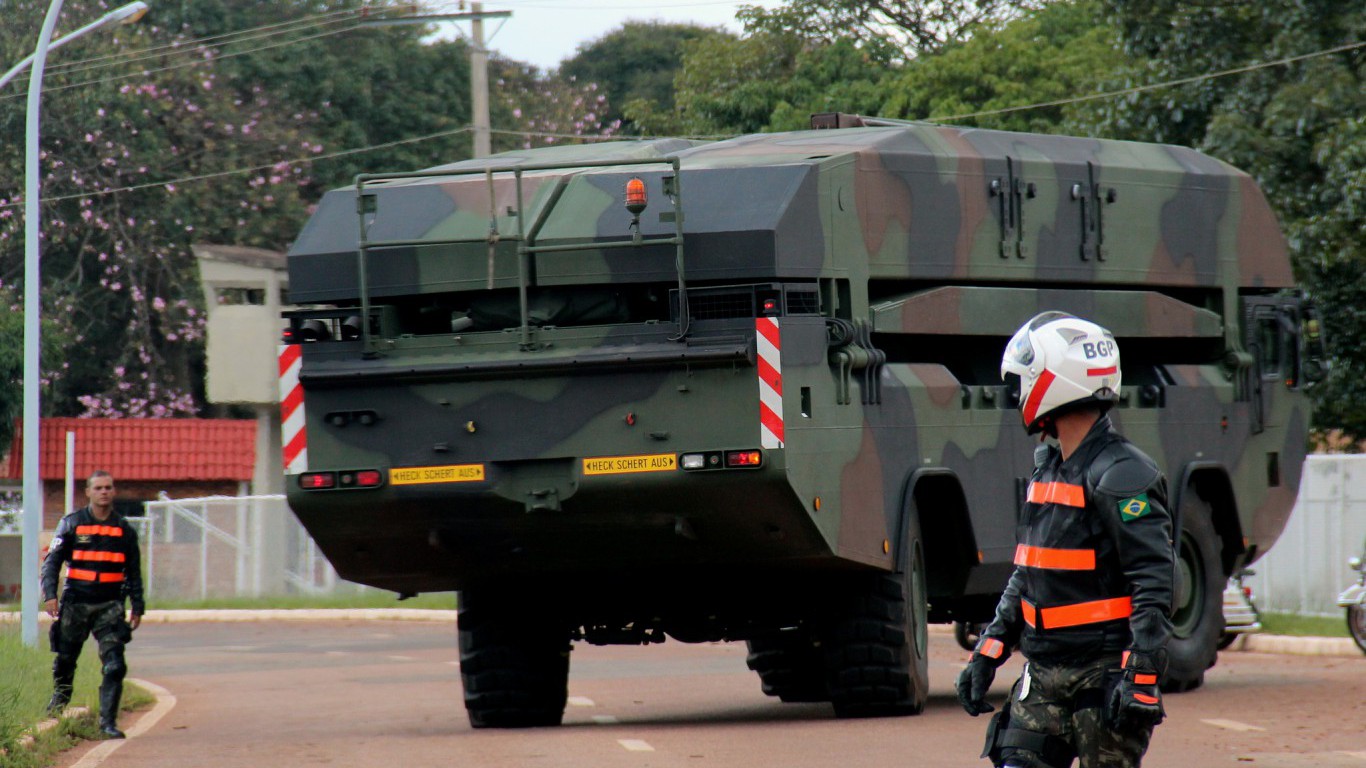
5. General Dynamics Corp.
> Profits for most recent fiscal year: $3.35 billion
> Arms and military services sales in 2018: $22.00 billion
> Arms sales as pct. of total sales in 2018: 61.0%
> 1-year change in arms sales: 10.0%
Incorporated in 1952, General Dynamics has sold a wide range of armaments, including missiles, warships, submarines, and rockets to all branches of the U.S. military over its decades-long history.
The company was awarded in 2018 contracts worth $4.8 billion to build DDG-51s, a class of warship used by the U.S. Navy. In 2019, it received contracts worth over $4 billion. In the largest acquisition in the company’s history, General Dynamics acquired in April 2018 IT giant CSRA for $9.7 billion. The acquisition was the primary driver of the 16.9% revenue growth in 2018, according to the company.
[in-text-ad]
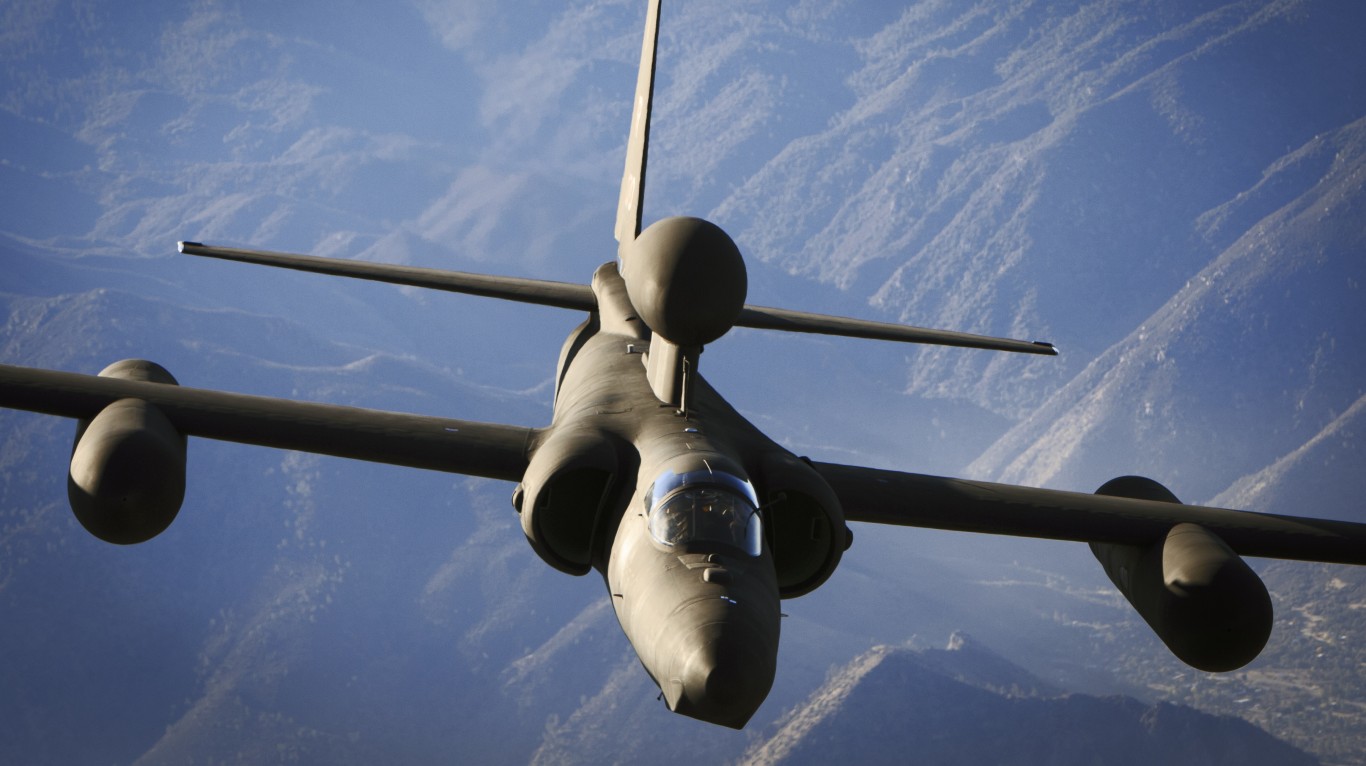
4. Raytheon
> Profits for most recent fiscal year: $2.88 billion
> Arms and military services sales in 2018: $23.44 billion
> Arms sales as pct. of total sales in 2018: 87.0%
> 1-year change in arms sales: 3.9%
The fourth largest defense contractor in the world, Raytheon is a missile and long-range precision weapons maker headquartered in Waltham, Massachusetts. It is one of the five U.S.-based arms and military services contractors dominating the world’s top defense contractors.
Through customers in over 80 countries, the company reported $27.06 billion in revenue in 2018, 87% of which came from arms sales and defense contracts, according to SIPRI estimates. The United States and many of its allies rely on the company’s radars and ballistic missile interceptors as part of their defense strategy. Raytheon also makes a wide range of air-to-surface, surface-to-air, air-to-air, and surface-to-surface precision guided missiles, in addition to bombs, torpedoes, and tactical small-arms sights.
3. Northrop Grumman Corp.
> Profits for most recent fiscal year: $3.23 billion
> Arms and military services sales in 2018: $26.19 billion
> Arms sales as pct. of total sales in 2018: 87.0%
> 1-year change in arms sales: 14.0%
Northrop Grumman Corp., founded in Hawthorne, California, in 1939, is known today for its B-2 stealth bomber line. According to SIPRI, Northrop Grumman made $26.19 billion from arms and military service sales in 2018, up 14% from 2017.
Like several other top defense contractors, Northrop Grumman Corp’s 2018 acquisition of aviation and military technology company Orbital ATK for $9.2 billion was one of the larger deals of the year. The deal, which vastly improved Northrop Grumman Corp.’s space capabilities, was considered part of the industry-wide preparations for Trump’s military modernization program announced in 2017, which included the establishment of a Space Force.
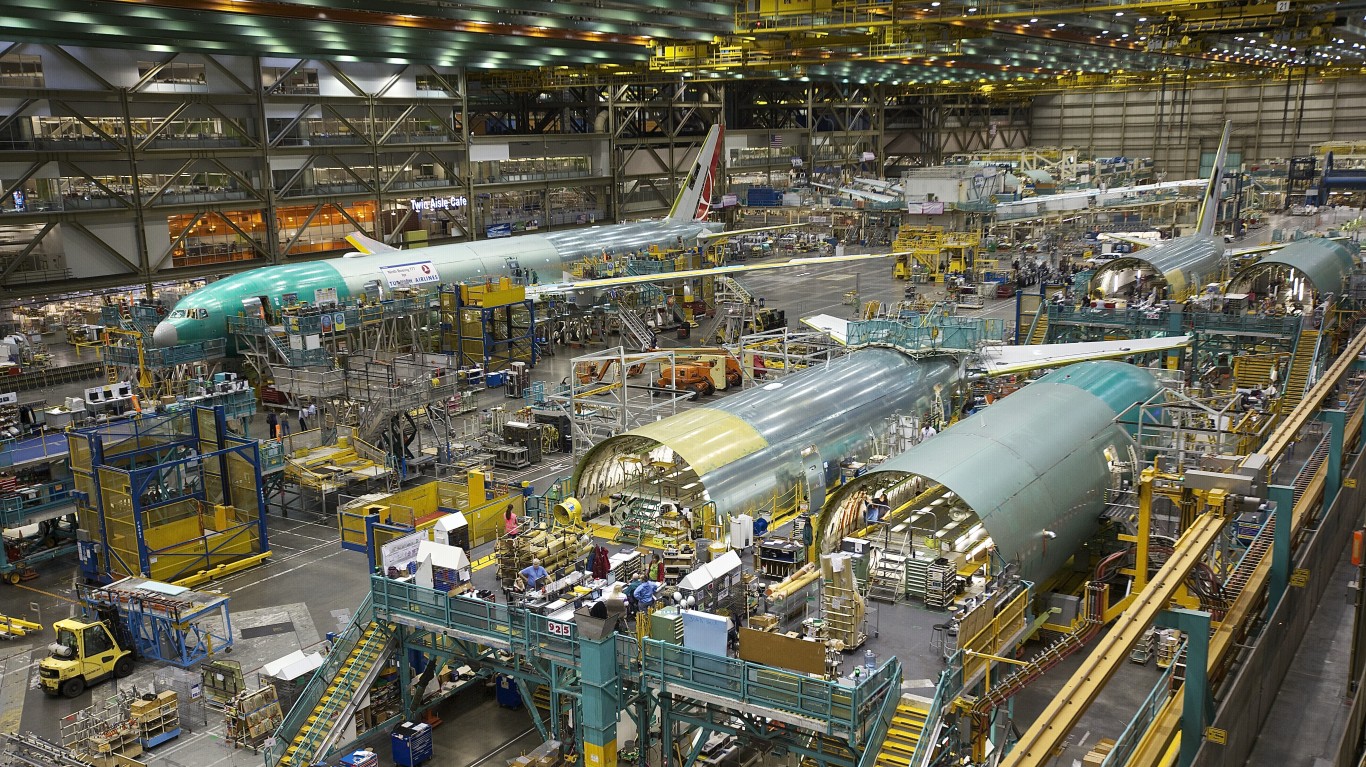
2. Boeing
> Profits for most recent fiscal year: $19.64 billion
> Arms and military services sales in 2018: $29.15 billion
> Arms sales as pct. of total sales in 2018: 29.0%
> 1-year change in arms sales: 5.7%
According to SIPRI, Boeing made $29.15 billion in arms and military services sales in 2018, the second most of any company worldwide. Defense contracts accounted for 29% of Boeing’s revenue, a relatively low share compared with other top military services companies. A bulk of Boeing’s revenue comes from sales of commercial aircraft such as the 737, 747, 767, 777, and 787 families.
In October of this year, leaked messages from Boeing engineers revealed that company officials knew of serious issues with Boeing’s 737 Max, but failed to disclose them to regulators. In its effort to repair the damage done to its brand and relationships, Boeing announced on Dec. 23 the firing of CEO Dennis Muilenburg. Current board of directors Chairman David Calhoun was named as Muilenburg’s successor.
[in-text-ad-2]
1. Lockheed Martin Corp.
> Profits for most recent fiscal year: $7.27 billion
> Arms and military services sales in 2018: $47.26 billion
> Arms sales as pct. of total sales in 2018: 88.0%
> 1-year change in arms sales: 5.2%
Lockheed Martin is by far the largest defense contractor in the world. The Bethesda, Maryland, company made $47.26 billion in arms and defense contracts last year, considerably more than the arms and military services sales at Boeing, the second largest defense contractor. While indisputably the largest arms and military services company on this list, Lockheed is nowhere near the size of civilian manufacturing companies. The four largest manufacturing companies — Toyota, VW, Apple, and Samsung — each had well over $200 billion in sales in 2018. This is largely because of legal constraints on arms transfers and the limited pool of customers available to defense contractors.
The company makes a wide range of military aircraft, including the F-16, F-22, and F-35 fighter jets, as well as sonar technologies, ships, missile defense systems, and missiles used by the Navy. Approximately 70% of Lockheed’s $53.8 billion net sales in 2018 came from the U.S. government, more than the entire budget of the Internal Revenue Service and Environmental Protection Agency combined.
Start by taking a quick retirement quiz from SmartAsset that will match you with up to 3 financial advisors that serve your area and beyond in 5 minutes, or less.
Each advisor has been vetted by SmartAsset and is held to a fiduciary standard to act in your best interests.
Here’s how it works:
1. Answer SmartAsset advisor match quiz
2. Review your pre-screened matches at your leisure. Check out the advisors’ profiles.
3. Speak with advisors at no cost to you. Have an introductory call on the phone or introduction in person and choose whom to work with in the future
Thank you for reading! Have some feedback for us?
Contact the 24/7 Wall St. editorial team.